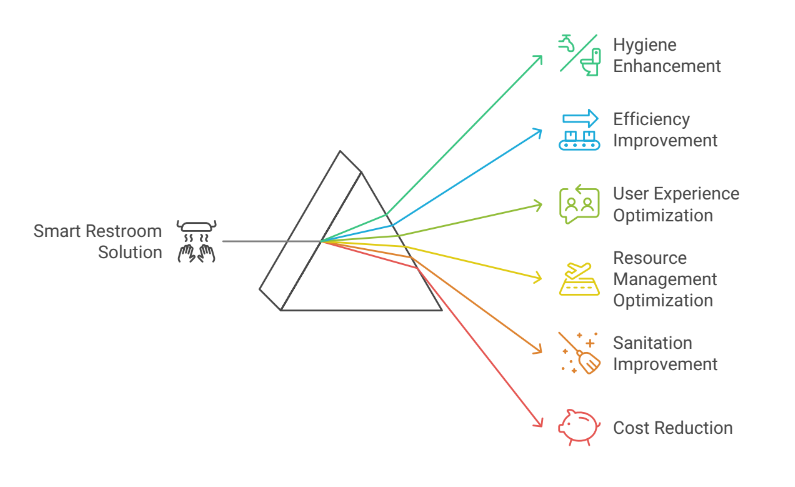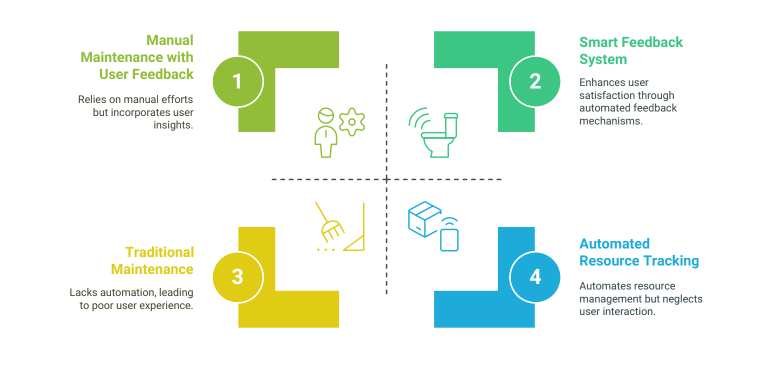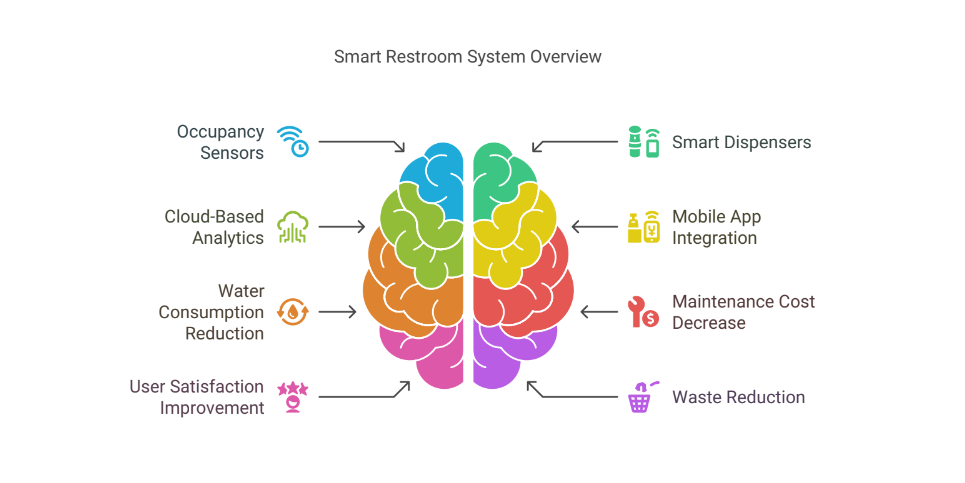IoT for Smart Restroom
Smart Hygiene, Freshness Assured – Intelligent Restroom Solutions
Smart restrooms leverage IoT and cloud-based analytics to enhance hygiene, efficiency, and user experience. These restrooms integrate sensors, automation, and real-time data collection to optimize resource management, improve sanitation, and reduce operational costs.
Problem StatementTraditional public restrooms often suffer from maintenance inefficiencies, unhygienic conditions, resource wastage, and lack of real-time monitoring. Facility managers struggle with unpredictable usage patterns, leading to poor service quality and customer dissatisfaction.



